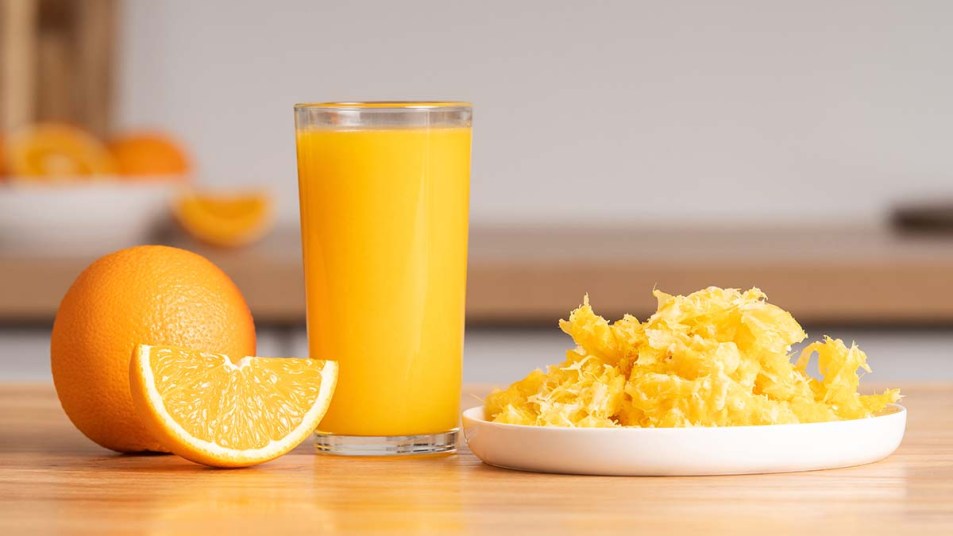
Making fresh-pressed juice at home is a lot more affordable than paying $5 or $6 for a bottle at the store. You can use up your favorite fruits and vegetables to make pressed juices — but what about the pulp that’s left behind? It turns out that you can boost your fiber intake by consuming the leftover pulp.
Given that most Americans don’t get enough daily fiber, repurposing your leftover juice pulp is a smart choice for better health — not to mention that it saves you money.
Is the pulp from juicing good for you?
Juicing extracts the juice from the skin, flesh, and seeds of fruits and veggies to make consuming them easier. Fresh juices still contain vitamins and antioxidants after the extraction process. But the pulp is a nutritional goldmine that’s often thrown away.
“Juicing leaves behind many valuable nutrients and fiber, such as the skin of the fruit and pulp from both the fruit and vegetables,” nutrition writer Saneya Moore notes in Michigan State University Extension.
The fiber content in pulp is worth considering because we don’t consume enough of it. According to the USDA, Americans consume an average of 16 grams of dietary fiber per day. This is lower than our daily recommended amount, which is 25 grams for women.
Getting your daily fill of dietary fiber can help with weight loss, warding off dementia, and slowing signs of aging such as wrinkles and sagging skin. Healthline highlights some fruits and veggies that are both commonly used for juicing and also rich in either soluble or insoluble fiber:
- Soluble fiber: The type of fiber that dissolves in water and slows down digestion to control blood sugar levels. It’s found in apples, carrots, and citrus fruits.
- Insoluble fiber: The kind of fiber that helps regulate your stool and avoid constipation. Cauliflower and dark leafy veggies are rich in insoluble fiber.
It’s clear that eating the pulp from the juicing process can fill your fiber intake gap. If you’re not sure how to cook with or eat juice pulp, here are some tasty ideas to get started.
What To Do With Juice Pulp
Using juice pulp to enhance your everyday meals means your fruits and veggies will be doing double duty. This trick can save you some money, because nothing’s going to waste and you’ll get an extra meal out of it.
So, give your juice pulp a second life. Some suggestions from health coach and juicing expert Eva Molenda (@splashofgoodness) include:
- Freeze in ice cube trays and add to smoothies, tea, or water
- Use to make homemade crackers
- Mix into muffin batter
- Use when making broth from scratch
- Make veggie burgers
Watch her video below for more ideas on how to repurpose juice pulp.
Who knew eating juice pulp could be a cost-effective way to sneak more fiber into your diet? Thankfully, a pricey juicer isn’t always necessary to make homemade juice. Your trusty French press should do the trick!
"juice" - Google News
June 21, 2022 at 01:30AM
https://ift.tt/RVAY03y
Ideas for Using Juice Pulp To Boost Your Daily Fiber - First For Women
"juice" - Google News
https://ift.tt/ZjHkWK2
https://ift.tt/vxEM4NZ
Bagikan Berita Ini














0 Response to "Ideas for Using Juice Pulp To Boost Your Daily Fiber - First For Women"
Post a Comment